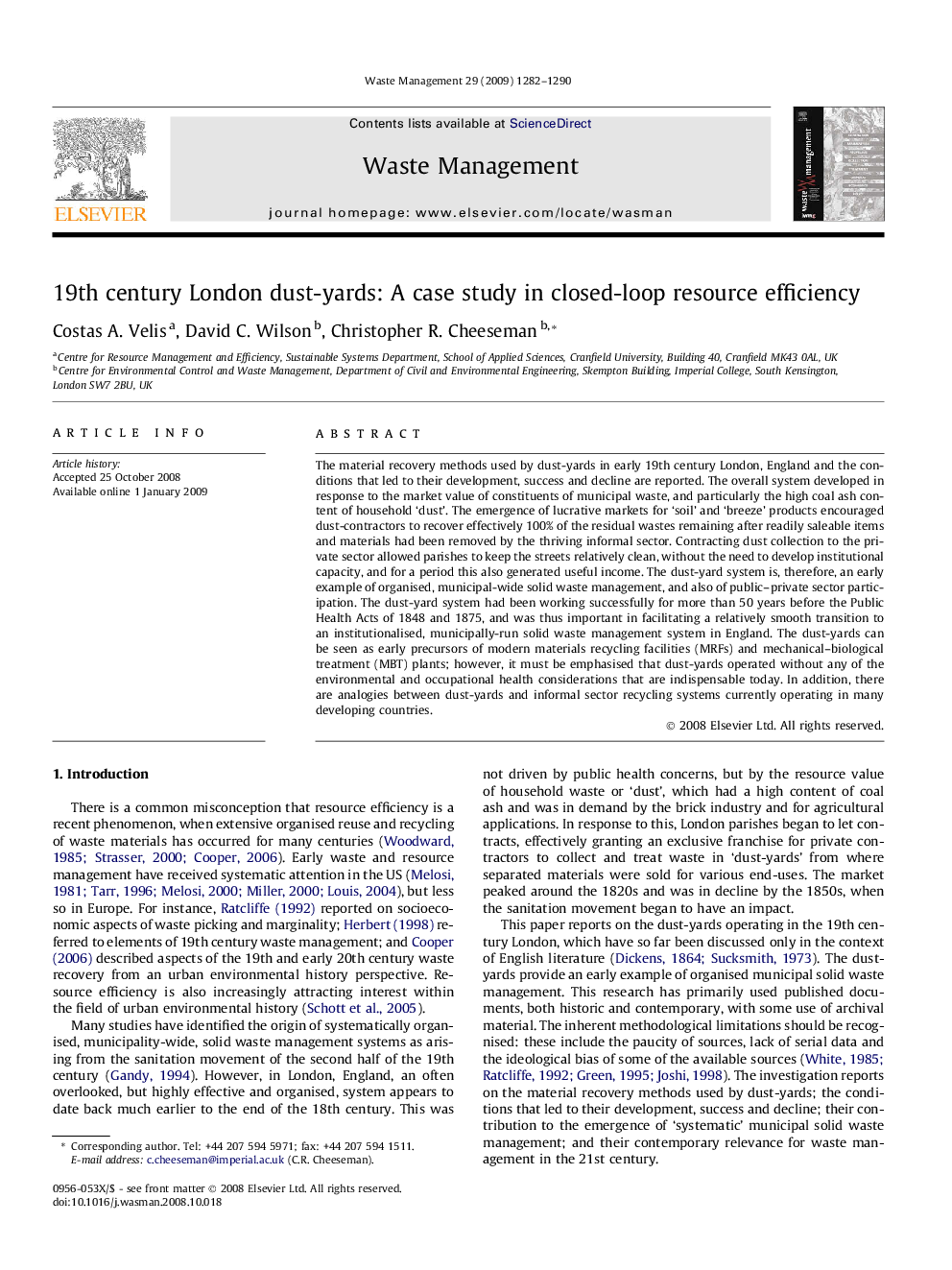| کد مقاله | کد نشریه | سال انتشار | مقاله انگلیسی | نسخه تمام متن |
|---|---|---|---|---|
| 4473518 | 1315099 | 2009 | 9 صفحه PDF | دانلود رایگان |

The material recovery methods used by dust-yards in early 19th century London, England and the conditions that led to their development, success and decline are reported. The overall system developed in response to the market value of constituents of municipal waste, and particularly the high coal ash content of household ‘dust’. The emergence of lucrative markets for ‘soil’ and ‘breeze’ products encouraged dust-contractors to recover effectively 100% of the residual wastes remaining after readily saleable items and materials had been removed by the thriving informal sector. Contracting dust collection to the private sector allowed parishes to keep the streets relatively clean, without the need to develop institutional capacity, and for a period this also generated useful income. The dust-yard system is, therefore, an early example of organised, municipal-wide solid waste management, and also of public–private sector participation. The dust-yard system had been working successfully for more than 50 years before the Public Health Acts of 1848 and 1875, and was thus important in facilitating a relatively smooth transition to an institutionalised, municipally-run solid waste management system in England. The dust-yards can be seen as early precursors of modern materials recycling facilities (MRFs) and mechanical–biological treatment (MBT) plants; however, it must be emphasised that dust-yards operated without any of the environmental and occupational health considerations that are indispensable today. In addition, there are analogies between dust-yards and informal sector recycling systems currently operating in many developing countries.
Journal: Waste Management - Volume 29, Issue 4, April 2009, Pages 1282–1290